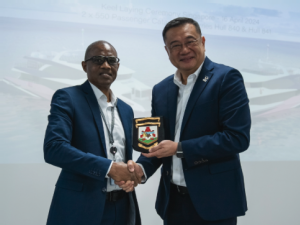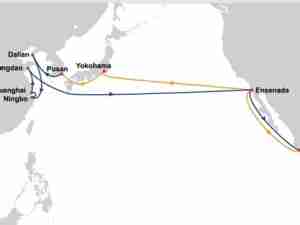ADM sees 1 million T grains through Brazil Amazon port in 2014
By: Reuters | Dec 12 2013 at 05:19 PM | Maritime | Ports & Terminals
The Brazilian arm of U.S. commodities trader Archer Daniels Midland Co expects to move 1 million tons of soy and corn through its new terminal at the mouth of the Amazon in 2014, the head of South American operations said.
The company eventually plans to expand capacity at its Barcarena terminal outside Brazil’s northern port city of Belem to handle 6 million tonnes of grain annually, taking pressure off Brazil’s congested southern export corridors.
“We expect to get licensing soon for Barcarena, which would allow us to move around a million tons of soy and corn next year,” CEO Valmor Schaffer said on the sidelines of an event in Sao Paulo.
The grains will come from nearby growing areas in Para state and from Mato Grosso via truck and river barge from Porto Velho, Rondonia, he added. Eventually, a railway could provide additional options for landlocked center-west grain producers in Brazil to ship their grains to international markets.
ADM’s terminal now has two operational shiploaders and the port has capacity to store 36,000 tons of grain, which the company expects to expand to three shiploaders with storage capacity of 130,000 tons. The terminal can handle Panamax-sized ships, which typically carry 60,000 tons of dry bulk.
Once completed, the terminal will move roughly the same amount as ADM exports through its Santos terminal in the southeastern state of Sao Paulo.
Schaffer said his company has extensive experience with running barges down the Mississippi and that it planned to establish a barge system down the Tapajos River in Brazil to supply the Barcarena terminal.
The so-called BR-163 highway connecting Mato Grosso state’s soy belt to the Tapajos and Amazon rivers is expected to offer relief to exporters in coming years, and Bunge and Cargill also plan to increase exports through the northern routes starting in 2014.
Outlook Improved
Schaffer said that although there would not be any major capacity expansion at Brazilian ports next year, conditions for exporting bulk cargoes such as grains would not be as bad as they were earlier this year, when Brazil experienced some of its worst port congestion.
The lack of investment and regulatory uncertainty in ports has made business difficult for Brazilian growers and traders, though not impossible, said Schaffer. Ports will employ better organization and coordination in shipping the record soy crop that will start harvesting in the coming weeks.
“Next year won’t be as bad. Pressure to export grains will be more spread out over the year,” he said. “The problems Brazil is facing are good ones.”
Schaffer said that pressure to ship soy and corn during the first quarter of 2013 was unusually strong due to demand created by the severe drought across the U.S. farm belt. The United States is coming off a bumper crop and Brazil is about to harvest its second in a row.
“I can’t call it a normal situation… but there will be fewer problems than last season,” he said. “I’m careful to avoid the word ‘chaos’ that gets thrown around in the media.”
He added that Brazil’s planted area has been expanding steadily in response to growing global demand for food and producers are well capitalized and financially healthy, increasing their capacity to expand production. (Reuters)









